Key Takeaways
- Programmatic advertising automates the buying and selling of digital ad inventory in real-time, increasing efficiency by removing manual negotiations and paperwork.
- Advanced targeting capabilities allow advertisers to reach specific audiences based on demographics, behaviors, and interests, resulting in higher conversion rates.
- Real-time optimization and analytics provide immediate insights that help marketers adjust campaigns on the fly, significantly improving ROI compared to traditional advertising methods.
- While programmatic advertising delivers cost efficiencies through reduced waste, marketers still face challenges with ad fraud, brand safety, and adapting to evolving privacy regulations.
- As AI and machine learning continue to advance, programmatic advertising is evolving beyond display ads to include video, audio, and digital out-of-home advertising channels.
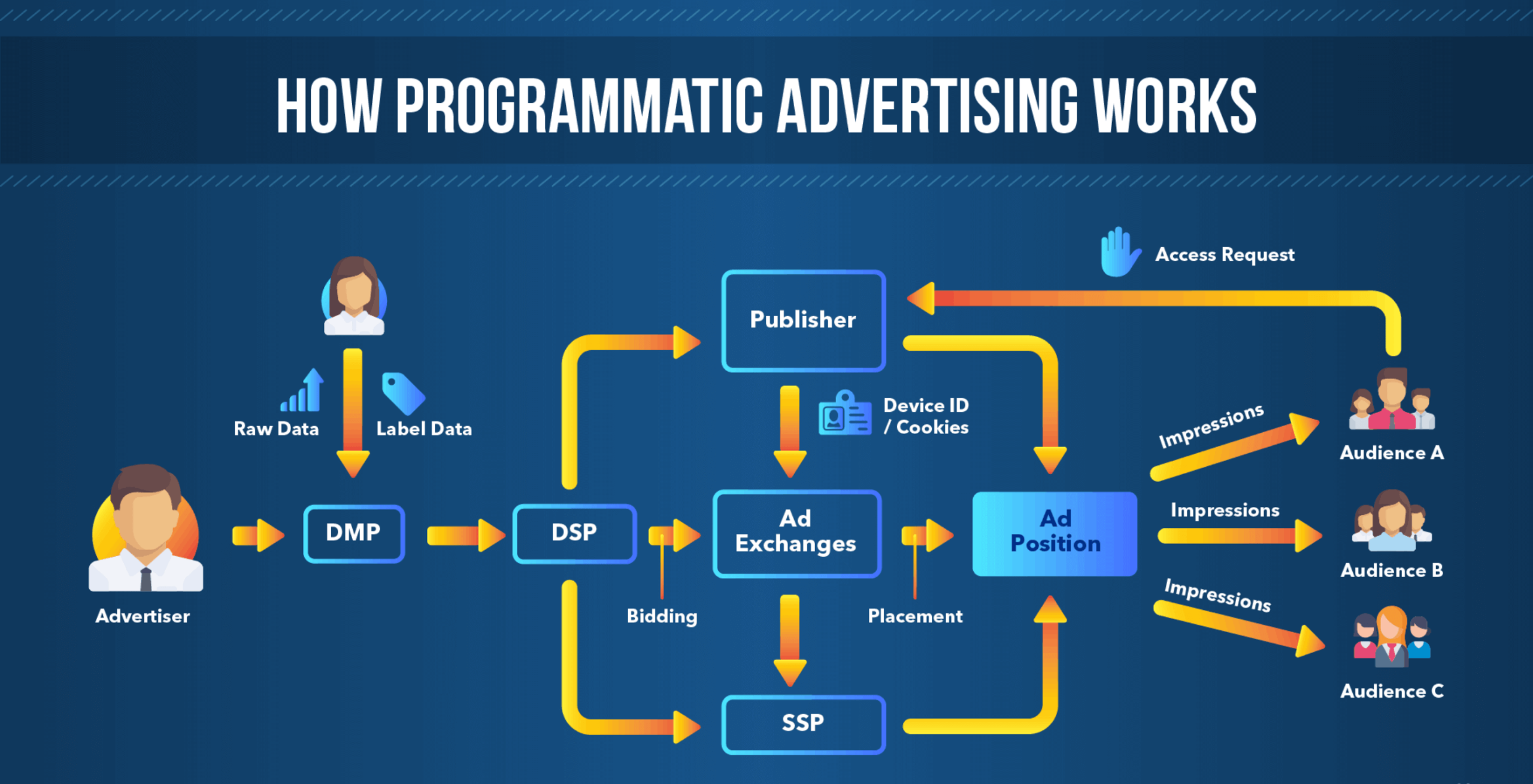
“Programmatic Advertising Display Market …” from www.marketresearchintellect.com and used with no modifications.
The digital advertising landscape has dramatically transformed over the past decade. Gone are the days of manual insertion orders and lengthy negotiations between advertisers and publishers. Enter programmatic advertising – the technology-driven approach that’s revolutionized how digital ads are bought and sold.
At its core, programmatic advertising automates the ad buying process through artificial intelligence and real-time bidding. Instead of relying on human negotiations and manual placements, sophisticated algorithms determine which ads appear to which users, at what time, and on which digital platforms – all in milliseconds. This automation brings unprecedented efficiency, precision, and scale to digital marketing campaigns that simply wasn’t possible before.
The Automatic Revolution: What Programmatic Advertising Really Means
Programmatic advertising refers to the automated buying and selling of online advertising space. Rather than the traditional process involving RFPs, human negotiations, and manual insertion orders, programmatic technology uses algorithms to purchase display space. This happens in real-time, allowing advertisers to show highly relevant ads to the right person at the right moment.
Think of programmatic advertising as a sophisticated matchmaking service between advertisers and publishers. The technology evaluates each available impression against the advertiser’s requirements before an automated auction determines which ad appears. All of this happens in the time it takes for a webpage to load – typically less than 100 milliseconds.
The rise of programmatic has been nothing short of meteoric. According to industry reports, programmatic advertising now accounts for over 85% of all digital display ad spending in many developed markets. This isn’t just a trend – it’s a fundamental shift in how digital advertising functions, driven by the twin forces of technological advancement and the demand for more efficient, data-driven marketing.
How Programmatic Advertising Works Behind the Scenes
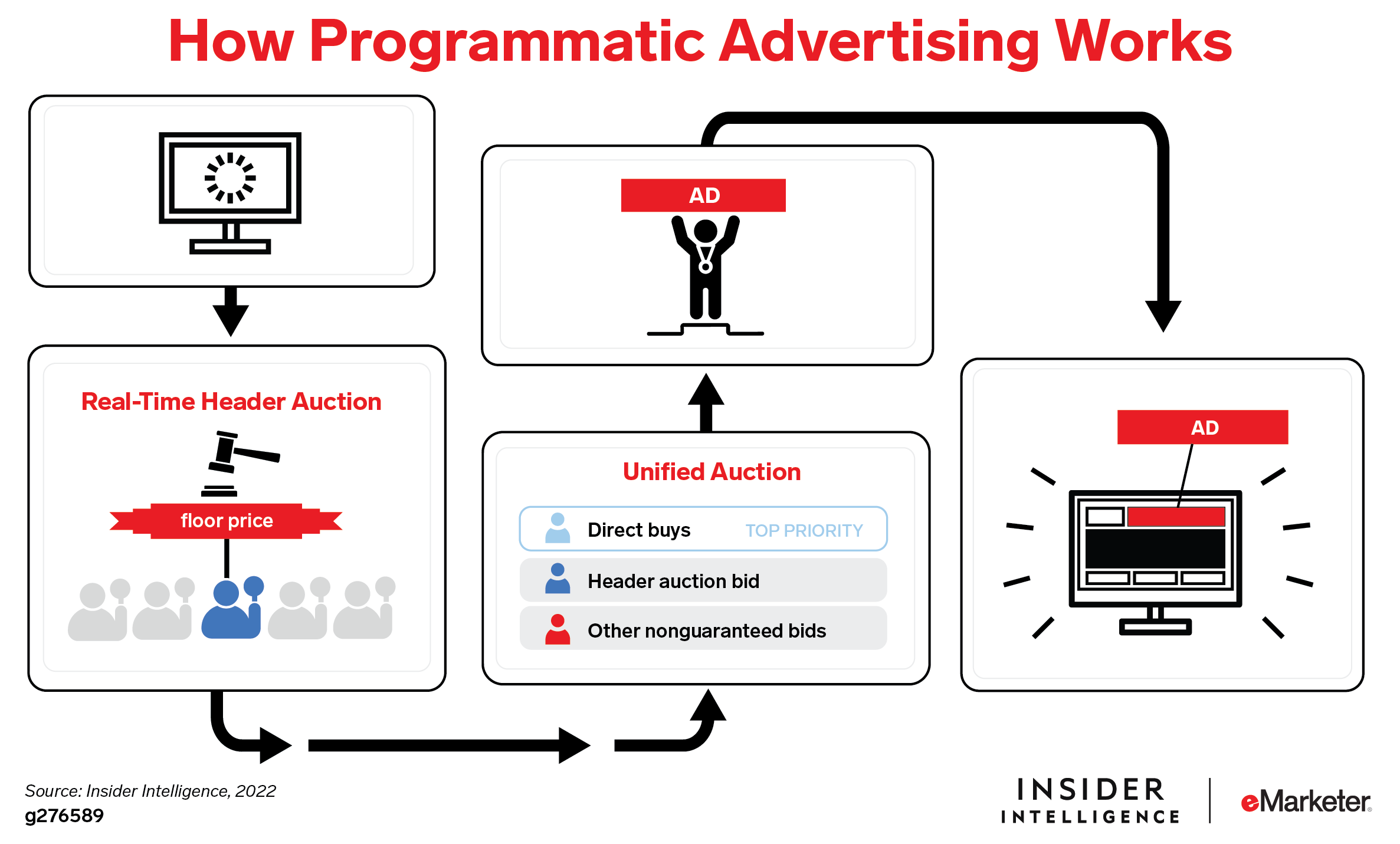
“Programmatic Advertising Explainer” from www.emarketer.com and used with no modifications.
When a user visits a website with ad space available, a complex series of events unfolds almost instantaneously. The publisher’s supply-side platform (SSP) sends information about the available impression and the user to an ad exchange, which then alerts demand-side platforms (DSPs) that an impression is up for auction. Each DSP evaluates the impression against advertisers’ campaign parameters and submits bids accordingly.
Real-Time Bidding Process Explained
Real-Time Bidding (RTB) is the heartbeat of programmatic advertising. When you visit a website, information about you and the page you’re visiting is sent to an ad exchange. In that moment – literally milliseconds – thousands of advertisers automatically compete in an auction to display their ad to you.
The highest bidder wins the impression, and their ad appears on your screen. This entire process happens faster than you can blink, with decisions based on numerous variables including your browsing history, demographic information, time of day, device type, and the advertiser’s target audience parameters. What makes RTB truly revolutionary is that each impression is individually auctioned and optimized, rather than buying ad impressions in bulk.
This lightning-fast auction system enables advertisers to make more informed decisions about which impressions to bid on and how much to pay, leading to more efficient spending and better performance. Meanwhile, publishers maximize their revenue by ensuring each impression sells for the highest possible price given market demand at that exact moment.
Key Components of the Programmatic Ecosystem
The programmatic ecosystem comprises several key technologies working in harmony. At the center are Demand-Side Platforms (DSPs), which allow advertisers to bid on and purchase inventory across multiple ad exchanges. Supply-Side Platforms (SSPs) help publishers connect their inventory to multiple ad exchanges, maximizing yield from their available ad spaces.
For businesses looking to leverage these technologies, exploring the best AI tools and software can be a great starting point.
Data Management Platforms (DMPs) serve as centralized hubs that collect, organize, and activate first-, second-, and third-party audience data. These platforms enable the sophisticated targeting that makes programmatic so powerful. Ad exchanges function as digital marketplaces where buyers and sellers trade advertising inventory through real-time auctions.
To further understand these digital environments, explore a comprehensive guide to search engines and their role in digital marketing.
Completing the ecosystem are verification partners who monitor for fraud, viewability, and brand safety, ensuring that ads appear in appropriate contexts and are actually seen by human users. Together, these technologies create an interconnected system that powers the automated buying and selling of digital advertising.
Types of Programmatic Buying Models
Programmatic advertising isn’t one-size-fits-all. The ecosystem offers several distinct transaction models to suit different advertising goals and budget requirements. Programmatic Real-Time Bidding (Open Auction) represents the most common form, where inventory is available to all advertisers who bid in a real-time auction environment. This model typically offers the most inventory at competitive prices.
Different Programmatic Ad Formats You Should Know
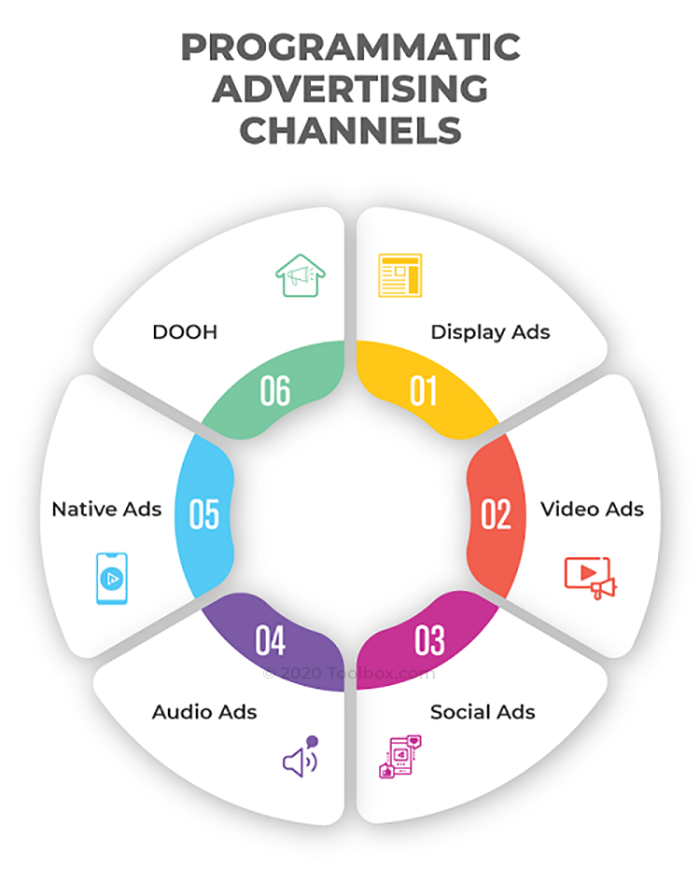
“What is Programmatic Advertising …” from www.spiceworks.com and used with no modifications.
Programmatic advertising has evolved far beyond simple display banners. Today’s marketers can leverage a diverse range of formats to engage audiences across multiple touchpoints throughout their digital journey. Understanding these different ad formats is crucial for crafting comprehensive campaigns that capture attention and drive engagement across the digital landscape.
Each format offers distinct advantages and creative opportunities to connect with your audience in contextually relevant ways. The beauty of programmatic lies in its flexibility to deliver these various formats through the same automated, data-driven infrastructure, allowing for cohesive cross-channel campaigns that maintain consistent messaging while adapting to each platform’s unique characteristics.
The technological advancements in programmatic platforms now enable advertisers to deploy increasingly sophisticated creative executions that were once impossible through automated channels. This has dramatically elevated the quality and effectiveness of programmatic campaigns, challenging the outdated perception that programmatic advertising means sacrificing creative quality for efficiency.
- Display ads in various sizes and interactive formats
- Video ads across in-stream, out-stream, and connected TV environments
- Native ads that match the look and feel of their placement context
- Audio ads on streaming platforms and digital radio stations
- Social ads
- Digital out-of-home (DOOH) placements in physical environments
Display Ads: Beyond the Basic Banner
While standard banner ads remain the foundation of many campaigns, modern display advertising has evolved significantly. Rich media formats now incorporate interactive elements, animations, and even mini-games that encourage user engagement rather than passive viewing. These enhanced formats consistently demonstrate higher engagement rates and brand recall compared to their static predecessors.
For businesses looking to leverage these advancements, exploring the best AI tools and software can provide a competitive edge in creating more engaging advertisements.
High-impact formats like interstitials, expandables, and takeovers command attention by temporarily dominating the user’s screen. Though more intrusive, when deployed thoughtfully with frequency caps and targeting precision, these formats can dramatically increase brand awareness metrics. The key is balancing visibility with user experience to avoid creating negative brand associations through overly disruptive implementations.
- Standard IAB formats (300×250, 728×90, etc.) for broad reach
- Rich media with interactive elements for deeper engagement
- Responsive formats that adapt to different screen sizes
- High-impact units like interstitials and expandables for maximum visibility
Dynamic creative optimization (DCO) takes display advertising to another level by automatically personalizing ad content based on user data, context, and behavior patterns. This technology allows a single campaign to generate thousands of creative variations tailored to individual users, dramatically improving relevance and performance metrics.
Recent advances in HTML5 have expanded creative possibilities while maintaining cross-platform compatibility, allowing for sophisticated animations and interactions that work seamlessly across devices without requiring plugins. This technological foundation enables designers to create compelling experiences that were previously only possible in non-programmatic premium placements.
Video Programmatic: From In-Stream to OTT
Video represents the fastest-growing segment in programmatic advertising, with formats ranging from pre-roll ads before content plays to outstream videos that appear within content feeds. The expansion into connected TV (CTV) and over-the-top (OTT) environments has been particularly explosive, combining television’s emotional impact with digital’s precise targeting and measurement capabilities. This convergence allows brands to reach cord-cutters and streaming audiences with the sight, sound, and motion of traditional TV commercials while gaining the accountability and flexibility of digital campaigns.
Native Programmatic Advertising Explained
Native advertising delivers promotional content that matches the form and function of the platform on which it appears. When executed programmatically, native ads maintain their contextual relevance while gaining the efficiency and scale of automated buying. This format typically generates higher engagement rates than standard display ads because it integrates seamlessly with the user experience, appearing as recommended content, sponsored articles, or in-feed placements that complement rather than interrupt the user’s activity. The programmatic infrastructure further enhances performance by ensuring these native placements reach the most receptive audiences based on interest and behavior signals.
Audio and DOOH: The Expanding Programmatic Landscape
As programmatic technology matures, it’s expanding beyond traditional digital environments to include audio streaming platforms and even physical digital out-of-home (DOOH) locations. Programmatic audio enables targeted delivery of ads across music streaming services, podcasts, and digital radio, reaching consumers during screenless moments when they’re highly receptive to auditory messages. Similarly, programmatic DOOH brings data-driven targeting and real-time optimization to digital billboards and screens in public spaces, allowing advertisers to adjust messaging based on time of day, weather conditions, or even local events, transforming static billboards into dynamic, contextually aware advertising opportunities.
Common Programmatic Advertising Challenges
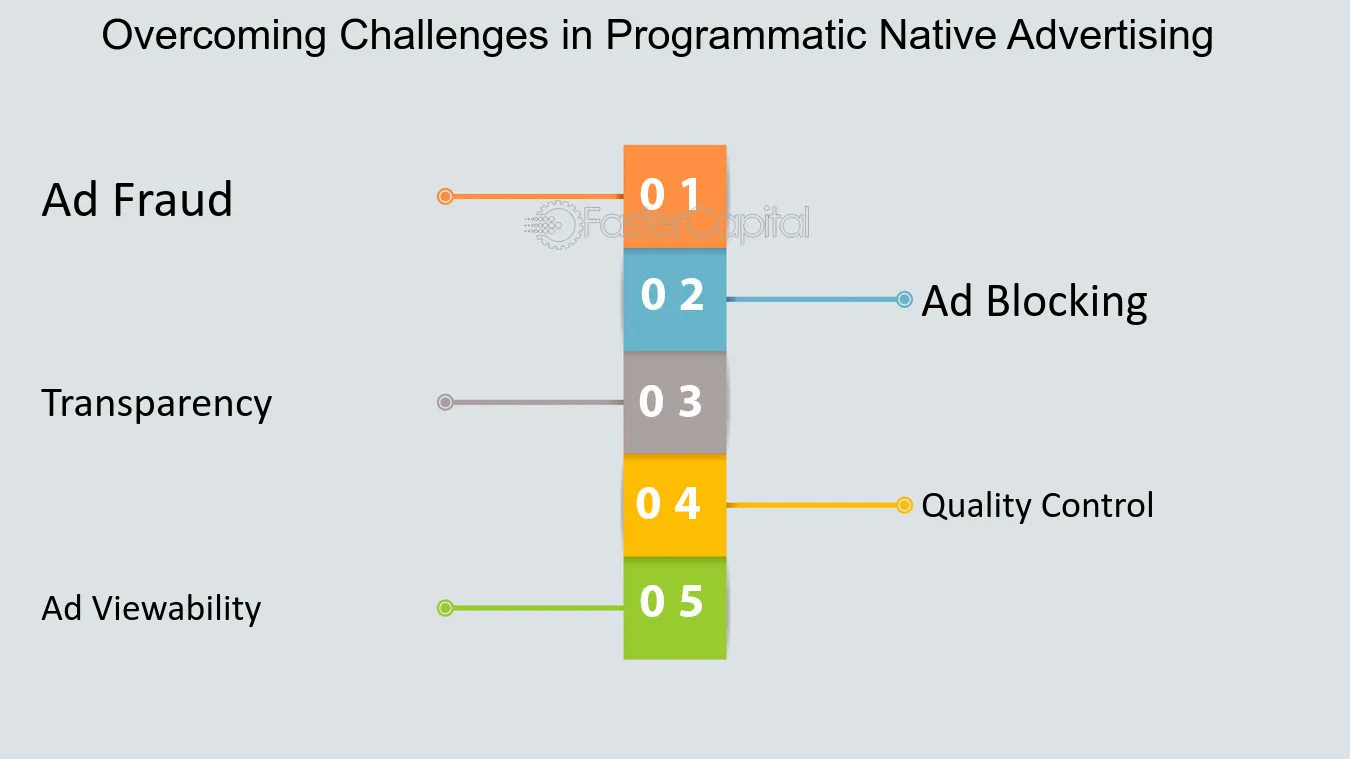
“Challenges Of Programmatic Advertising …” from fastercapital.com and used with no modifications.
Despite its many advantages, programmatic advertising isn’t without challenges that marketers must navigate carefully. Understanding these potential pitfalls is essential for developing strategies that maximize the benefits of automation while minimizing risks. The technology continues to evolve rapidly, with industry initiatives addressing many of these concerns through improved standards, verification technologies, and transparency practices that strengthen the programmatic ecosystem.
Ad Fraud Concerns and Prevention Strategies
Ad fraud remains one of the most significant challenges in programmatic advertising, with sophisticated schemes like domain spoofing, ad stacking, and bot traffic draining campaign budgets without delivering genuine human impressions. To combat this, advertisers should implement multi-layered protection strategies including pre-bid fraud detection, working with vendors certified by the Trustworthy Accountability Group (TAG), and regularly analyzing campaign data for suspicious patterns. Additionally, focusing on quality inventory sources and maintaining direct relationships with premium publishers can significantly reduce exposure to fraudulent activity while improving overall campaign performance and brand safety.
Brand Safety Issues
The automated nature of programmatic buying can sometimes result in ads appearing alongside inappropriate or harmful content that damages brand reputation. Recent high-profile incidents have highlighted how even major brands can find their advertisements placed next to extremist content, misinformation, or other controversial material.
Protection strategies include implementing comprehensive keyword blocklists, category exclusions, and working with third-party verification partners who provide real-time content analysis. Many advertisers also create custom brand safety profiles that reflect their specific tolerance for different types of content, recognizing that appropriate environments may vary significantly between brands in different industries or with different target audiences.
Data Privacy Regulations Impact
The regulatory landscape around data privacy continues to evolve rapidly with legislation like GDPR, CCPA, and other regional frameworks fundamentally changing how marketers collect, process, and leverage user data for advertising purposes. Successful programmatic strategies must now incorporate privacy by design, embracing contextual targeting approaches, first-party data activation, and new identity solutions that respect user consent while still enabling effective personalization. Forward-thinking marketers view these regulatory changes not merely as constraints but as opportunities to build more transparent, trust-based relationships with consumers that will deliver sustainable long-term value in an increasingly privacy-conscious digital ecosystem.
Getting Started with Programmatic Advertising

“Mastering B2B Programmatic Advertising” from www.searchenginejournal.com and used with no modifications.
Launching your first programmatic advertising campaign requires careful planning and strategic decision-making. The initial setup process may seem complex, but breaking it down into manageable steps makes it accessible even for organizations new to programmatic buying. The investment in properly establishing your programmatic foundation will pay dividends through more efficient campaigns and better performance outcomes.
For those interested in expanding their digital marketing efforts, consider exploring how to start an e-commerce business as a complementary strategy.
Before diving into platform selection, take time to clearly define your campaign objectives, target audience, and key performance indicators. Understanding precisely what you’re trying to achieve—whether it’s brand awareness, lead generation, or direct sales—will guide your subsequent decisions about platforms, formats, and optimization strategies. This clarity helps prevent the common pitfall of being distracted by the wealth of available metrics and losing sight of your primary business goals.
Consider whether to manage programmatic buying in-house or work with specialized partners. Many organizations adopt a hybrid approach, gradually building internal capabilities while leveraging agency expertise for more complex aspects. This allows for knowledge transfer while maintaining campaign performance during the transition period. The right approach depends on your organization’s existing resources, technical capabilities, and the strategic importance of programmatic within your overall marketing strategy.
Choosing the Right DSP for Your Business
Selecting the appropriate Demand-Side Platform (DSP) is perhaps the most critical decision in your programmatic journey. Evaluate potential platforms based on inventory access, targeting capabilities, ease of use, transparent fee structures, and quality of support. Consider whether your needs are better served by a self-service platform that offers complete control but requires more expertise, or a managed service that provides guidance but may offer less transparency. Many marketers find that different DSPs excel in specific channels or formats, leading them to employ multiple platforms for different campaign objectives while maintaining a primary platform for the bulk of their programmatic investment.
Setting Up Your First Programmatic Campaign
When configuring your inaugural campaign, start with clear targeting parameters that balance reach with precision. Build a comprehensive audience strategy incorporating demographic, behavioral, and contextual signals while being mindful of frequency caps to prevent ad fatigue. Prepare multiple creative variations to enable testing and optimization, ensuring all assets meet technical specifications for your chosen formats and placements. Most importantly, implement robust tracking and attribution to measure performance accurately across the customer journey, including view-through conversions that capture programmatic’s influence even when users don’t immediately click on advertisements.
Budget Allocation Best Practices
Effective budget management in programmatic advertising balances exploration with performance optimization. Allocate approximately 70-80% of your budget to proven strategies that consistently deliver against your KPIs, while reserving 20-30% for testing new tactics, audiences, or creative approaches. This experimental portion is vital for discovering new opportunities and preventing campaign stagnation as the digital landscape evolves.
Rather than spreading budgets thinly across numerous tactics, concentrate spending in areas with sufficient scale to generate statistically significant results. This focused approach allows for more meaningful optimization and clearer insights into what’s working. Additionally, consider implementing algorithmic budget allocation through tools like automated bid adjustments and campaign budget optimization features, which can dynamically shift spending toward the best-performing segments and placements based on real-time performance data.
Key Performance Indicators to Track
The true power of programmatic advertising lies in its measurability. Unlike traditional media, every impression, click, and conversion can be tracked and analyzed to optimize performance. The most effective programmatic campaigns focus on a balanced scorecard of metrics that align with business objectives rather than vanity metrics that may look impressive but don’t correlate with meaningful outcomes.
- Viewability rate – percentage of impressions that were actually viewable
- Video completion rate – percentage of video ads watched to completion
- Cost per acquisition (CPA) – total cost divided by number of conversions
- Return on ad spend (ROAS) – revenue generated per dollar spent
- Audience reach within specific segments – how effectively you’re reaching target demographics
When analyzing these metrics, context is crucial. A campaign with a high cost per click might still be highly effective if those clicks represent high-value prospects who convert at a higher rate. Similarly, impression volume means little if those impressions aren’t reaching relevant audiences or generating engagement. Programmatic platforms provide real-time access to these insights, allowing for immediate optimization rather than waiting for post-campaign analysis.
Establish a regular cadence for reviewing performance data, from daily tactical adjustments to weekly strategic reviews. The most successful programmatic advertisers develop a testing culture, continuously experimenting with new audience segments, creative approaches, and bidding strategies to improve performance incrementally over time. This data-driven approach transforms marketing from a creative guessing game into a scientific process of continuous improvement.
Future Trends Reshaping Programmatic Advertising
The programmatic landscape continues to evolve at breakneck speed, driven by technological innovation, changing consumer behaviors, and regulatory developments. Staying ahead of these trends isn’t just advantageous – it’s essential for maintaining competitive performance in an increasingly sophisticated digital ecosystem. The most forward-thinking marketers are already preparing for these changes, developing strategies that will thrive in tomorrow’s programmatic reality while delivering results today.
AI and Machine Learning Advancements
Artificial intelligence and machine learning are transforming programmatic advertising from rules-based automation to truly intelligent systems capable of nuanced decision-making. Advanced algorithms now analyze thousands of variables simultaneously to predict which impressions will deliver the highest value, moving beyond simple demographic targeting to understand complex patterns in consumer behavior. These systems continuously learn and improve, identifying opportunities that would be impossible for human operators to discover manually and executing optimizations at a scale and speed that redefines campaign performance benchmarks.
Cookieless Future Adaptation
“As third-party cookies phase out, marketers must pivot to new identity solutions that balance personalization with privacy. The winners will be those who invest now in first-party data strategies and contextual intelligence while experimenting with emerging identity frameworks.”
– Interactive Advertising Bureau (IAB) Tech Lab
The deprecation of third-party cookies represents both a challenge and opportunity for programmatic advertisers. While traditional retargeting and cross-site tracking capabilities are diminishing, new approaches like cohort-based targeting, contextual revival, and universal ID solutions are emerging to fill the gap. Progressive marketers are already diversifying their targeting strategies, enriching first-party data assets, and testing cookieless targeting solutions to ensure continuity when cookies eventually disappear entirely.
Publishers are responding by developing more sophisticated first-party data offerings, creating authenticated user experiences that provide value in exchange for consented data sharing. This shift may ultimately benefit both consumers and advertisers by creating more transparent data relationships with clearer value exchanges, even as it requires significant adaptation in campaign targeting and measurement approaches.
The most successful organizations are approaching this transition as an opportunity to reset their data strategy, prioritizing genuine consumer relationships and meaningful engagement over third-party data collection that often delivered questionable value. Those who embrace privacy as a consumer benefit rather than a limitation will find themselves better positioned for sustainable long-term success.
For more insights, explore this guide to emerging cybersecurity threats.
Programmatic Direct Growth
Programmatic direct – the automation of guaranteed inventory purchases rather than auction-based buying – represents the fastest-growing segment of programmatic advertising. This approach combines the efficiency and data advantages of programmatic technology with the certainty and premium quality of direct publisher relationships. Advertisers gain access to premium inventory with guaranteed volumes and placements while maintaining the targeting precision and operational efficiency of programmatic workflows.
This evolution reflects the maturation of programmatic advertising from a primarily remnant-focused technology to a comprehensive solution for managing all digital media investments. As more premium publishers make their most valuable inventory available through programmatic direct channels, the distinction between “programmatic” and “direct” buying continues to blur, creating a more unified digital advertising ecosystem that serves both buyers and sellers more effectively.
Take Your Digital Advertising to the Next Level with Programmatic
Programmatic advertising has fundamentally transformed digital marketing from a process of manual negotiations and fixed placements to a dynamic, data-driven ecosystem that delivers unprecedented targeting precision and operational efficiency. By embracing automation while maintaining strategic control, advertisers can achieve superior outcomes across the entire marketing funnel – from building awareness and engagement to driving conversions and fostering loyalty. The technology continues to evolve rapidly, opening new opportunities for marketers who stay informed and adapt their approaches accordingly.
For those looking to enhance their digital marketing strategies, exploring the best AI tools can provide significant advantages.
To truly harness the power of programmatic advertising, marketers must combine technological capabilities with strategic vision and creative excellence. The platforms provide powerful tools, but success ultimately depends on having clear objectives, compelling creative, insightful data strategies, and continuous optimization processes. By focusing on these fundamentals while leveraging programmatic’s capabilities, advertisers can create more relevant, effective campaigns that deliver measurable business results while providing better experiences for consumers.
Frequently Asked Questions
As programmatic advertising continues to gain prominence in marketing strategies, advertisers naturally have questions about implementation, effectiveness, and best practices. Here are answers to some of the most common questions about this powerful advertising approach.
What’s the difference between programmatic and traditional display advertising?
Traditional display advertising involves manually negotiating with publishers, selecting specific websites, and placing insertion orders for predefined audience segments. This process is labor-intensive, slow to implement, and difficult to optimize once campaigns are live. Programmatic advertising automates this entire workflow through technology platforms that purchase individual impressions in real-time based on their value to the advertiser’s specific campaign goals.
While traditional buying might guarantee placement on specific websites, programmatic offers more granular targeting of individual users regardless of where they browse. This shift from buying “contexts” (specific websites) to buying “audiences” (specific users) represents the fundamental transformation that programmatic technology has brought to digital advertising, enabling more precise targeting, dynamic optimization, and comprehensive performance measurement.
How much budget should I allocate to programmatic advertising?
Budget allocation depends on your specific marketing objectives, industry, and overall digital strategy. Most established brands now dedicate 50-80% of their digital display budgets to programmatic channels, recognizing its efficiency advantages. For organizations new to programmatic, starting with 15-20% of your digital budget allows for meaningful testing while limiting risk, with increases based on performance data. The most important factor is ensuring sufficient budget to generate statistically significant results for proper optimization and learning, typically requiring at least 3-4 weeks of consistent activity before drawing definitive conclusions about campaign effectiveness.
Can small businesses benefit from programmatic advertising?
Absolutely. While programmatic was initially dominated by large advertisers with extensive resources, the technology has democratized significantly. Today’s self-service platforms offer accessible entry points for businesses of all sizes, with some DSPs accepting campaigns with budgets as low as $500-1,000. Small businesses can particularly benefit from programmatic’s precise targeting capabilities, which eliminate wasted impressions and ensure limited budgets reach the most valuable prospects.
The key for smaller advertisers is focusing on highly specific targeting parameters and conversion-oriented campaigns rather than broad awareness initiatives that require larger budgets to achieve meaningful scale. By identifying your most valuable customer segments and crafting messaging that addresses their specific needs, even modest programmatic investments can deliver substantial returns that outperform traditional digital buying methods.
Is programmatic advertising suitable for B2B marketing?
Programmatic has evolved significantly to address B2B marketing needs, offering sophisticated targeting options for reaching decision-makers in specific industries, company sizes, and job functions. By combining intent data signals, firmographic targeting, IP-based company targeting, and contextual relevance, B2B marketers can now efficiently reach highly specific professional audiences that were previously difficult to target at scale. Many B2B marketers also leverage programmatic for account-based marketing (ABM) strategies, delivering coordinated messaging to multiple stakeholders within target organizations throughout lengthy consideration cycles.
How does programmatic advertising handle privacy concerns?
Programmatic advertising continues to adapt to evolving privacy regulations and changing consumer expectations around data usage. Modern platforms offer features like detailed consent management, anonymized targeting options, and comprehensive data governance tools to ensure compliance with regulations like GDPR and CCPA. Many advertisers are shifting toward privacy-centric approaches that rely less on individual tracking and more on contextual relevance, cohort-based targeting, and first-party data activation with explicit consent.
As the industry transitions away from third-party cookies, new identity solutions are emerging that balance personalization capabilities with privacy protection. These include universal ID frameworks based on hashed emails, publisher-provided IDs, and probabilistic matching techniques that maintain targeting effectiveness without compromising user privacy. The most sustainable approaches focus on providing clear value exchanges where consumers understand and accept the data relationship with brands that deliver relevant, useful experiences.
Programmatic advertising is a method of using automated technology to buy and sell digital ad space. This approach allows marketers to target specific audiences and optimize their campaigns in real-time. For those new to this concept, it’s essential to understand the basics of programmatic advertising and how it can benefit your marketing strategy.

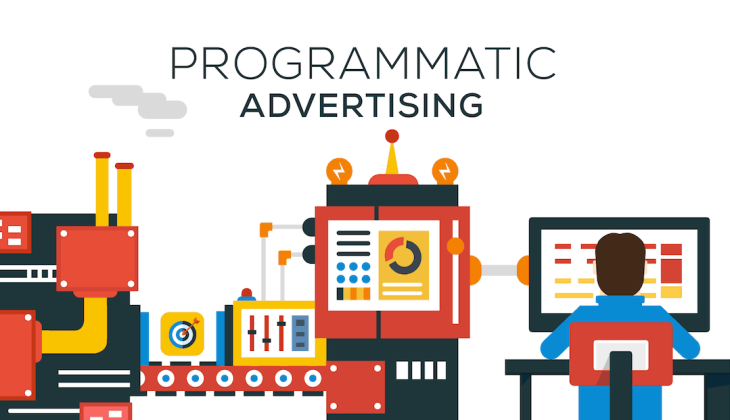
Join the Conversation